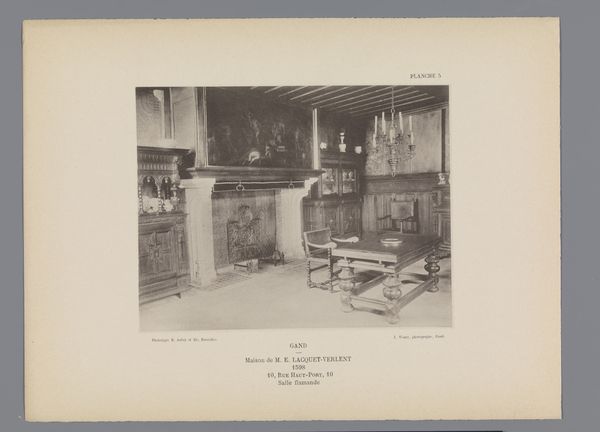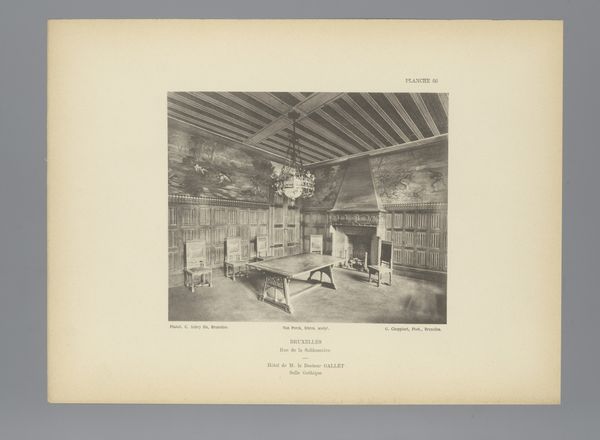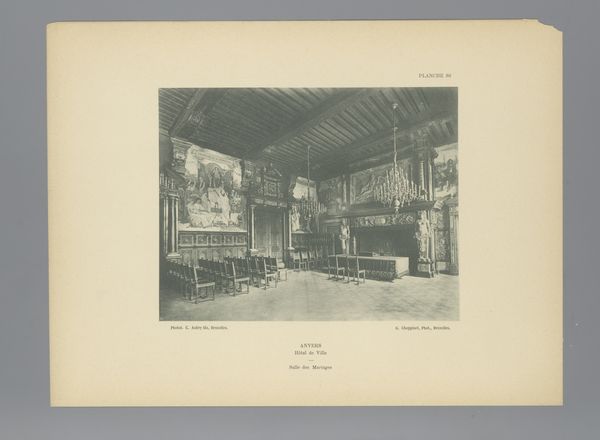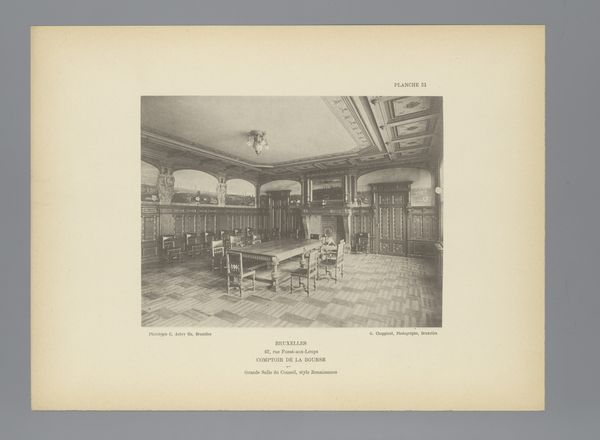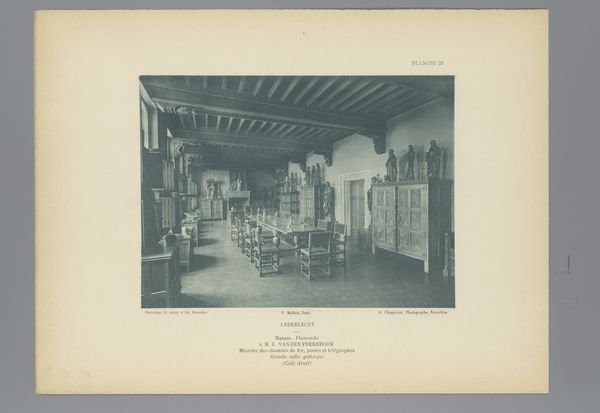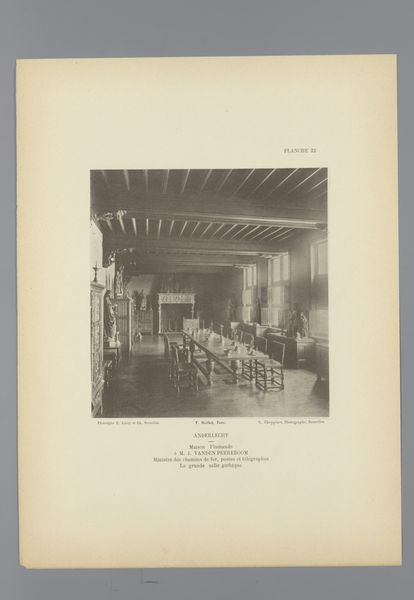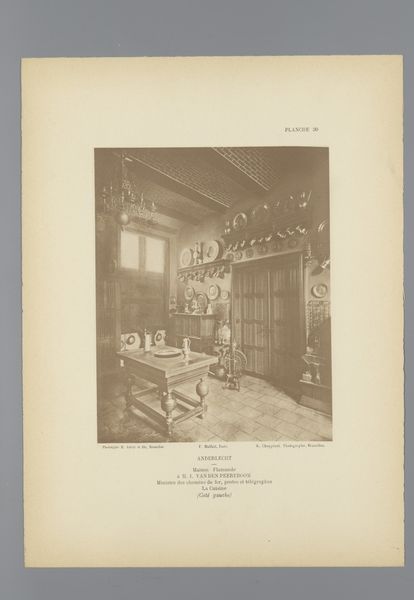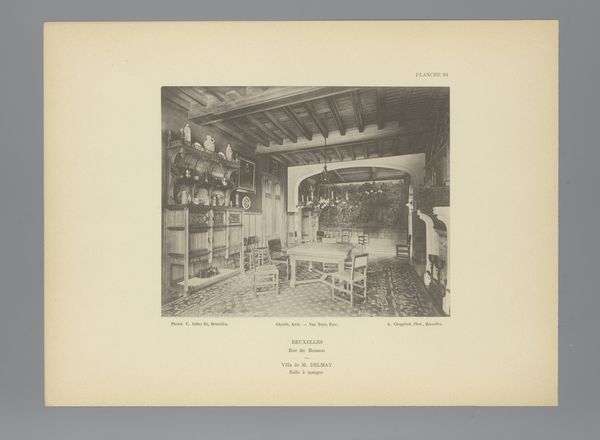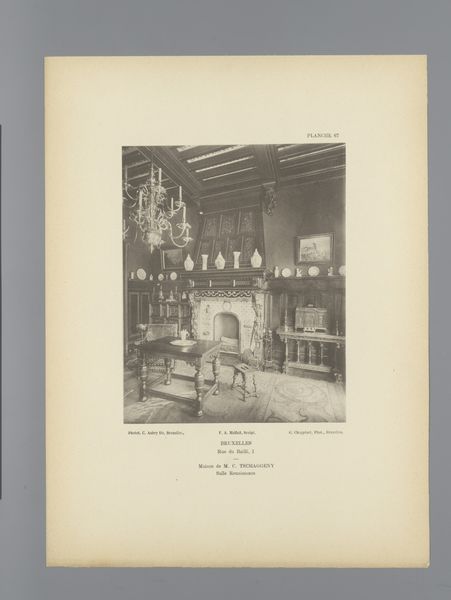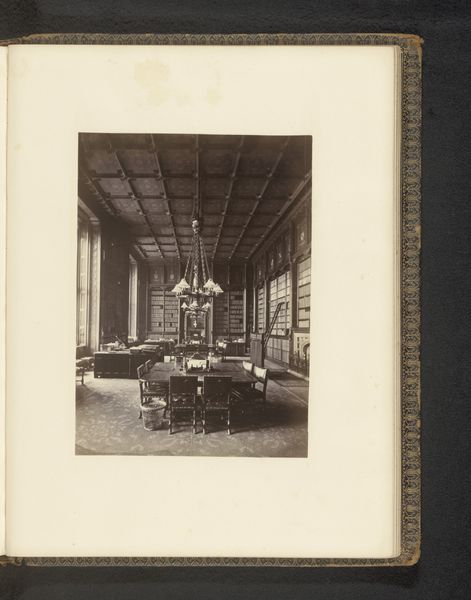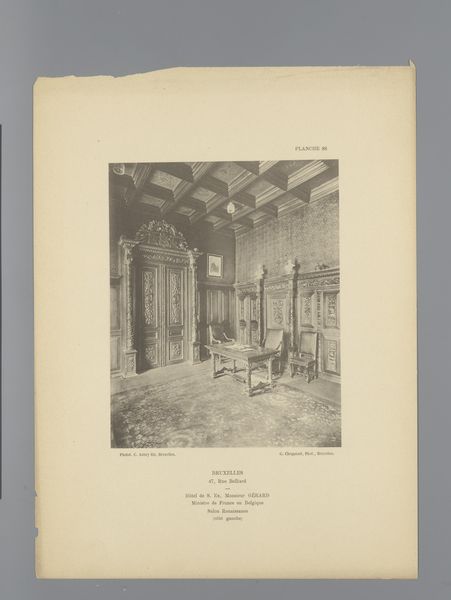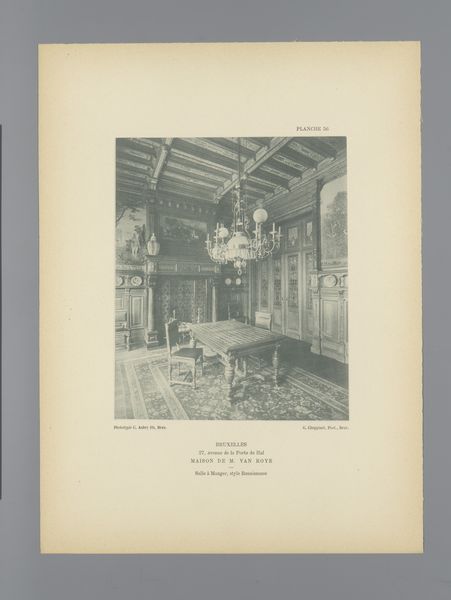
Gezicht op een eetzaal voor onderofficiers in een kazerne in Oudenaarde, België before 1898
0:00
0:00
print, photography
# print
#
landscape
#
photography
#
realism
Dimensions: height 156 mm, width 202 mm
Copyright: Rijks Museum: Open Domain
Curator: Today, we’re looking at a photograph taken before 1898, titled “Gezicht op een eetzaal voor onderofficiers in een kazerne in Oudenaarde, België," which translates to "View of a mess hall for non-commissioned officers in a barracks in Oudenaarde, Belgium". The print is attributed to G. Choppinet. Editor: That's quite a mouthful! My first thought? Austere. Even with the light streaming in, it has such a formal, almost severe feeling. And those sturdy tables… they're screaming, “Regulation.” Curator: Precisely! This image provides a glimpse into the structured life within the barracks. The tables, arranged with geometric precision, signify order and discipline. Notice the contrast with the chessboard floor, perhaps symbolizing strategy. Editor: Strategy over lunch? Hmm, sounds intense. And the fireplace – ornate, but somehow still cold. The arches give off subtle religious architectural vibes, or a cloister effect. It makes me wonder about the psychological impact of that visual symbolism in such a structured environment. Curator: Good point! Historically, the fireplace represents hearth and community, yet here, in a military context, its decorative style seems more about institutional grandeur. Remember, these barracks held complex hierarchies and belief systems—symbols of which permeated daily life. Editor: So, almost like visual programming? The architecture reinforcing power dynamics? Fascinating! It's funny how such an apparently simple photograph opens up all these deeper meanings about authority and identity. Curator: Exactly! It shows the conscious use of design to shape the inhabitants’ mindset, invoking tradition and duty through meticulously crafted details, while the photography locks into a Realist genre. Editor: Who knew a mess hall could be so revealing! Now, I’m thinking about all the silent stories embedded in those rigid table legs and austere walls. It has truly given me much to contemplate. Curator: Indeed, art allows us to read history, and photography preserves it in unique detail. There is a certain emotional impact to recognizing how a built environment affects how and what its inhabitants think and believe.
Comments
No comments
Be the first to comment and join the conversation on the ultimate creative platform.
